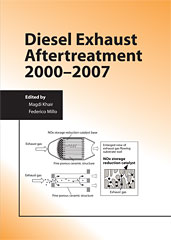Journal Article
Comparison between Internal and External EGR Performance on a Heavy Duty Diesel Engine by Means of a Refined 1D Fluid-Dynamic Engine Model
2015-09-06
2015-24-2389
The potential of internal EGR (iEGR) and external EGR (eEGR) in reducing the engine-out NOx emissions in a heavy-duty diesel engine has been investigated by means of a refined 1D fluid-dynamic engine model developed in the GT-Power environment. The engine is equipped with Variable Valve Actuation (VVA) and Variable Geometry Turbocharger (VGT) systems. The activity was carried out in the frame of the CORE Collaborative Project of the European Community, VII FP. The engine model integrates an innovative 0D predictive combustion algorithm for the simulation of the HRR (heat release rate) based on the accumulated fuel mass approach and a multi-zone thermodynamic model for the simulation of the in-cylinder temperatures. NOx emissions are calculated by means of the Zeldovich thermal and prompt mechanisms.

